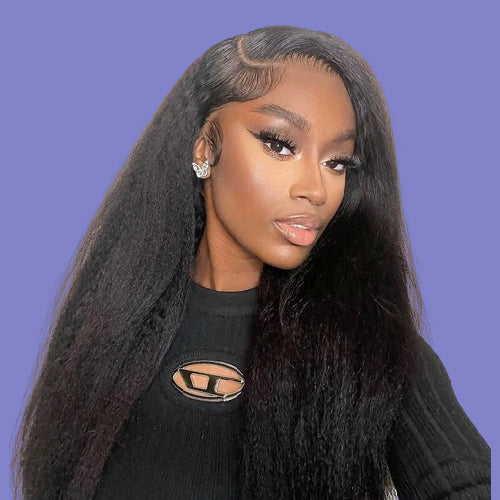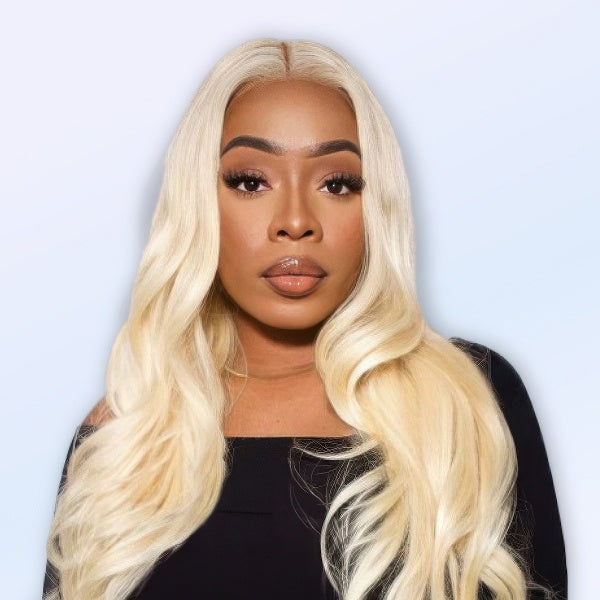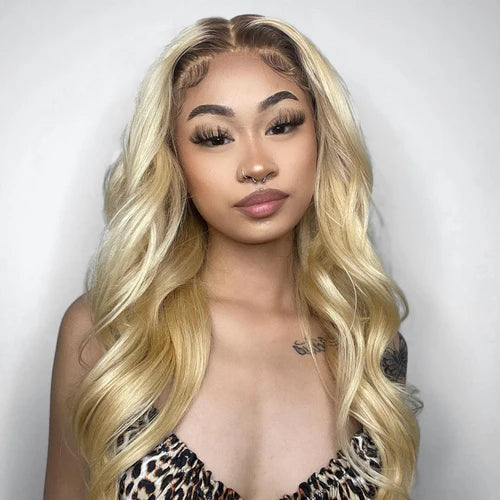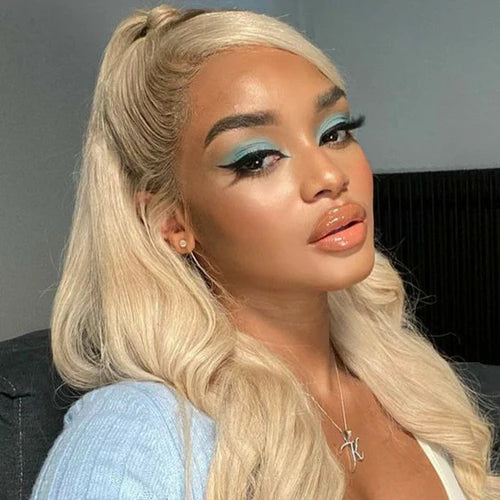How Long Will a Human Hair Wig Last?
Human hair wigs are an investment, so knowing their lifespan is important. This guide covers key factors that impact a human hair wig's durability. It explores the hair source quality and wig construction. It also looks at how often you wear the wig and your styling practices. Proper care like washing, conditioning and storage are covered too. Signs that indicate it's time for a new wig are explained. Following the tips in this guide can help maximize your human hair wig's longevity and keep it looking luxurious.
What Makes Up a Quality Human Hair Wig?

Understanding the makeup of human hair wigs is important for assessing their potential longevity. Human hair wigs offer many advantages over synthetic alternatives.
1. What are Human Hair Wigs Made Of?
Human hair wigs are made from real human hair sourced from donors or collected after haircuts. Unlike synthetic fiber wigs, human hair wigs have a more natural look and movement. The hair can be styled with heat just like growing hair.
2. Advantages Over Synthetic Wigs
The main advantages of human hair over synthetic options are:
- Realistic Appearance: Human hair reflects light in a more natural way for a more authentic look.
- Versatile Styling: You can use hot tools like curling irons on human hair without worry of damage.
- Breathability: Human hair wigs allow better air circulation compared to synthetic fibers.
- Customization: Human hair can be easily trimmed, colored, and chemically treated to customize the style.
While initially more expensive, the natural, customizable look and wearable lifespan make human hair wigs worthwhile for many wig wearers. However, their overall durability depends on wig construction and hair quality.
Factors That Influence Human Hair Wig Durability
Beyond just being made of real human hair, there are several key factors that determine how long a wig's beautiful look and quality will last. Considering these factors is crucial when investing in a premium human hair wig.
1. Source and Quality of the Hair
The origin and treatment of the actual hair strands used has a major impact on a wig's lifespan. Higher quality hair means longer durability.
- Hair Origin: Brazilian virgin hair is prized for its superior quality and durability. The thick, strong cuticles resist damage better than finer textures.
- Hair Treatment: How the hair is processed also affects its lifespan. Virgin hair that has undergone little to no chemical processing tends to last years longer compared to hair that has been overly processed or treated with harsh chemicals before being used in wigs.
2. Construction and Design of the Wig
The wig's specific construction method and design also plays a role in its overall life expectancy.
- Wig Cap Material: Caps made from bathing suit lace, Swiss lace, monofilament mesh or thin skin-like materials allow maximum airflow and breathability to the hair's roots. This prevents premature drying out of the strands.
- Wig Type: Lace front and 360 lace wigs where each hair strand is individually knotted tend to have a much longer lifespan compared to wefted wigs where hair is sewn in tracks. The knotting method prevents excessive shedding over time.
- Hair Density: While ultra-high density may look amazingly full, those super thick wigs are also more prone to tangling and matting. Lower to moderate densities tend to have a longer smooth, tangle-free lifespan.
By selecting a human hair wig crafted from high-grade hair origins, like Brazilian virgin hair, and sewn with durable construction, you're making an investment in longer-lasting quality.

How Usage and Maintenance Impact Wig Durability
In addition to the hair source and wig construction, how you personally use and care for your human hair wig plays a major role in its longevity. Both your wearing habits and styling practices can either extend or cut short your wig's lifespan.
1. Frequency of Wear
The more often a human hair wig gets worn, the quicker it will show signs of wear and tear from friction and exposure. However, rotating your wig usage can really help maximize its life.
- Daily Wear: Wearing the same wig every single day without a break means you can expect a shorter overall lifespan of around 3-6 months, even with proper care.
- Occasional Wear: Treating your human hair wig as an accent piece and only wearing it occasionally, like 1-2 times per week, allows it to potentially last 1-2 years.
- Multiple Wigs: Having at least 2-3 human hair wigs in your rotation lets you spread out the wear, so each one lasts longer. This makes the investment more worthwhile.
2. Styling Practices
How gently you style and handle the wig hair is also key. Applying high heat and harsh chemicals will deteriorate the wig much faster over time.
- Heat Styling: Using hot tools like flat irons, curlers and blow dryers can cause dryness, damage and breakage with frequent use. Allow wig hair to air dry when possible.
- Chemical Treatments: Coloring, perming, relaxing or other harsh chemical services add to the overall chemical exposure, weighing down the cuticles.
- Physical Handling: Brushing and styling aggressively leads to excess shedding, frizz and tangling. Always detangle and style your wig gently.
With proper care like limiting heat, avoiding unnecessary chemical treatments, and handling the hair delicately when styling, you can maximize your human hair wig's smooth, beautiful look for the longest time possible.
Care Guidelines to Extend Your Wig's Life
How you care for and maintain your human hair wig on a regular basis has a big impact on its overall longevity. Proper washing, conditioning, storage and handling practices can significantly extend your wig's lifespan.
1. Cleansing and Conditioning
Washing your wig is necessary to keep it fresh, but over-washing can lead to dryness, excessive tangles, and shedding. Use a cool water temperature and a gentle, sulfate-free shampoo formulated for wigs or human hair extensions. Gently massage the shampoo into the wig hair in a downward motion, then rinse thoroughly until no product residue remains.
Conditioning is also key - apply a deep conditioning masque or leave-in conditioner weekly, focusing on the dry ends which tend to become more damaged over time. Be sure to fully rinse out any conditioners to prevent buildup. Excessive washing, especially with harsh shampoos, can strip away the wig's natural oils causing premature dryness and tangling.
2. Storage and Preservation
Where and how you store your human hair wig when not in use is crucial for maintaining its shape, texture and longevity over time. Always keep wigs on a heat-resistant plastic or canvas wig head to prevent deformation. Avoid storing in bathrooms or other damp areas as moisture breeds mildew. Heat sources should also be avoided.
Use a breathable wig bag or storage box that allows airflow to prevent overdrying and odors. The more you can mimic natural hair's environment, the better preserved your wig will remain between wears.
3. Day-to-Day Handling
Careful handling before and after wearing your human hair wig can also minimize damage and shedding. Before wearing, gently brush through and detangle using a wig brush or your fingers. You can lightly mist the wig with a conditioning leave-in product to add moisture.
After taking off your wig, avoid repeatedly putting it on and off as this stresses the cap's construction. Gently brush through again before storing to prevent tangles from setting in. Using a wig grip or cap underneath your wig also reduces friction against your natural hair when wearing.
When It's Time for a New Wig

No matter how well you care for your human hair wig, eventually it will show signs of wear and need to be replaced.
1. Identifying Signs of Wear
Watch out for these indicators that your wig's lifespan is coming to an end:
- Excessive Shedding: More than a normal amount of hair loss daily.
- Dryness and Breakage: The hair feels crispy and snaps easily when over-damaged.
- Matting and Tangling: No matter how much detangling, it constantly knots up.
- Changing Texture: The hair becomes coarser, frizzy or wiry when cuticles deteriorate.
2. Deciding Between Repair and Replacement
Minor issues like light shedding or tangling may be repairable through professional re-venting, re-sealing or conditioning treatments. However, major repairs get pricey.
But if the hair texture is significantly damaged or the wig cap is stretched out, it's likely more cost-effective to replace it versus repairing. Don't try forcing an old, damaged wig to last longer as that can lead to hair loss and scalp issues.
Maximizing Your Human Hair Wig's Life
Investing in a quality human hair wig is worthwhile, but its lifespan depends on factors like hair quality, wig construction, and your care practices. Gentle washing, conditioning, storage, and handling can extend your wig's life. However, all wigs eventually need replacing when they show signs of wear. Knowing when to repair or replace your wig helps you look your best and get the most out of your investment.







Leave a comment